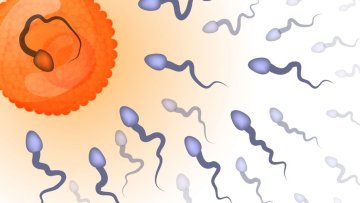14:30
14:30
Skeletal muscles as prototypes of active materials
Abstract
Considerable attention has been recently focused on the study of muscle tissues viewed as prototypes of new materials that can actively generate stresses. The intriguing mechanical properties of such systems can be linked to hierarchical internal architecture. To complicate matters further, they are driven internally by endogenous mechanisms supplying energy and maintaining non-equilibrium. In this talk we review the principal mechanisms of force generation in muscles and discuss the adequacy of the available mathematical models.
The global attractor for autonomous quasi-geostrophic equations with fractional dissipation in $\mathbb{R}^2$
Abstract
Reinhard Farwig and Chenyin Qian
Consider the autonomous quasi-geostrophic equation with fractional dissipation in $\mathbb{R}^2$
\begin{equation} \label{a}
\theta_t+u\cdot\nabla\theta+(-\Delta)^{\alpha}\theta=f(x,\theta)
\end{equation}
in the subcritical case $1/2<\alpha\leq1$, with initial condition $\theta(x, 0)= \theta^{0}$ and given external force $f(x,\theta)$. Here the real scalar function $\theta$ is the so-called potential temperature, and the incompressible velocity field $u=(u_1,u_2)=(-\mathcal {R}_2\theta,\mathcal {R}_1\theta)$ is determined from $\theta$ via Riesz operators. Our aim is to prove the existence of the compact global attractor $\mathcal{A}$ in the Bessel potential space $H^s(\mathbb{R}^2)$ when $s>2(1-\alpha)$.
The construction of the attractor is based on the existence of an absorbing set in $L^2(\mathbb{R}^2)$ and $H^s(\mathbb{R}^2)$ where $s>2(1-\alpha)$. A second major step is usually based on compact Sobolev embeddings which unfortunately do not hold for unbounded domains. To circumvent this problem we exploit compact Sobolev embeddings on balls $B_R \subset \mathbb{R}^2$ and uniform smallness estimates of solutions on $\mathbb{R}^2 \setminus B_R$. In the literature the latter estimates are obtained by a damping term $\lambda\theta$, $\lambda<0$, as part of the right hand side $f$ to guarantee exponential decay estimates. In our approach we exploit a much weaker nonlocal damping term of convolution type $\rho*\theta$ where $\widehat \rho<0$.
A deterministic optimal design problem for the heat equation
Abstract
In everyday language, this talk studies the question about the optimal shape and location of a thermometer of a given volume to reconstruct the temperature distribution in an entire room. For random initial conditions, this problem was considered by Privat, Trelat and Zuazua (ARMA, 2015), and for short times we remove both the randomness and geometric assumptions in their article. Analytically, we obtain quantitative estimates for the well-posedness of an inverse problem, in which one determines the solution in the whole domain from its restriction to a subset of given volume. Using a new decomposition of $L^2(\Rd)$ into heat packets from microlocal analysis, we conclude that there exists a unique optimal such subset, that it is semi-analytic and can be approximated numerically by solving a sequence of finite-dimensional optimization problems. (joint with Alden Waters)
Martensitic inclusions in low-hysteresis shape memory alloys
Abstract
I will report some recent analytical results on microstructures in low-hysteresis shape memory alloys. The modelling assumption is that the width of the thermal hysteresis is closely related to the minimal energy that is necessary to build a martensitic nucleus in an austenitic matrix. This energy barrier is typically modeled by (singularly perturbed) nonconvex elasticity functionals. In this talk, I will discuss recent results on the resulting variational problems, including stress-free inclusions and microstructures in the case of almost compatible phases. This talk is partly based on joint works with S. Conti, J. Diermeier, M. Klar, and D. Melching.
Localized Frequency Synchrony in Phase Oscillator Networks: Emergence and Dynamics
Abstract
Networks of interacting oscillators give rise to collective dynamics such as localized frequency synchrony. In networks of neuronal oscillators, for example, the location of frequency synchrony could encode information. We discuss some recent persistence results for certain dynamically invariant sets called weak chimeras, which show localized frequency synchrony of oscillators. We then explore how the network structure and interaction allows for dynamic switching of the spatial location of frequency synchrony: these dynamics are induced by stable heteroclinic connections between weak chimeras. Part of this work is joined with Peter Ashwin (Exeter).
From studying the rhythmic movements, researchers at the Universities of York, Birmingham, Oxford and Kyoto University, Japan, have developed a mathematical formula which makes it easier to understand and predict how sperm make the journey to fertilise an egg. This knowledge will help scientists to gauge why some sperm are successful in fertilisation and others are not.
17:30
Transseries as surreal analytic functions
Abstract
Transseries arise naturally when solving differential equations around essential singularities. Just like most Taylor series are not convergent, most transseries do not converge to real functions, even when using advanced summation techniques.
On the other hand, we can show that all classical transseries induce analytic functions on the surreal line. In fact, this holds for an even larger (proper) class of series which we call "omega-series".
Omega-series can be composed and differentiated, like LE-series, and they form a differential subfield of surreal numbers equipped with the simplest derivation. This raises once again the question whether all surreal numbers can be also interpreted as functions. Unfortunately, it turns out that the simplest derivation is in fact incompatible with this goal.
This is joint work with A. Berarducci.
16:00
Globally Valued Fields, fullness and amalgamation
Abstract
Globally Valued Fields, studied jointly with E. Hrushovski, are a formalism for fields in which the sum formula for valuations holds, such as number fields or function fields of curves. They form an elementary class (in continuous first order logic), and model-theoretic questions regarding this class give rise to difficult yet fascinating geometric questions.
I intend to present « Lyon school » approach to studying GVFs. This consists of reducing as much as possible to local considerations, among other things via the "fullness" axiom.


